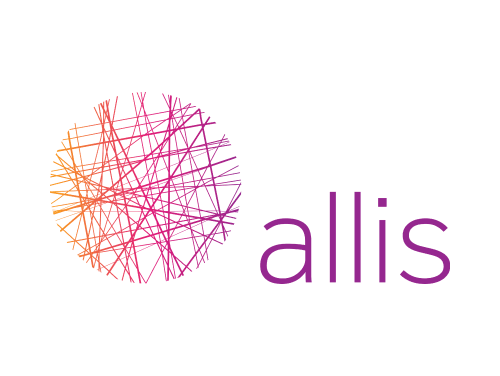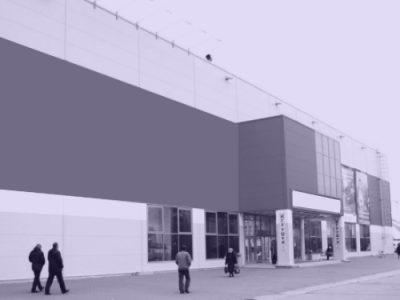How to Understand Retail Analytics?
Our Clients
Committing to the success of our clients around the world
Data has emerged as a pivotal element for making well-informed decisions. Retail analytics refers to the systematic application of data analysis tools and techniques, encompassing various aspects of retail operations. This strategic methodology has empowered numerous examples of retailers to gain profound insights into customer behaviors, fine-tune audit execution, and elevate overall business performance. By utilizing big data in retail, businesses can discern patterns, forecast trends, and implement prescriptive analytics to make data-driven decisions, ultimately enhancing customer experiences and boosting the efficiency of retail processes.
In this dynamic landscape, retail analysis and retail data science plays a pivotal role in shaping the future of retailing analytics. Therefore, it is essential to comprehend the entire process across different analytic levels or types of retail analytics:
Retail Analytics Explained: Understanding the past to uncover causal relationships
Descriptive analytics: Foundational stage in retail analytics, dedicated to scrutinizing historical data to get insights into past events and trends. This phase allows retailers to clarify sales patterns, understanding customer preferences and evaluating product performance. For example, a meticulous exploration of retail sales analytics from a few years ago can yield valuable insights into consumer behavior and market demands, aiding retailers in adapting their strategies accordingly.
Diagnostic analytics: Advancing beyond the mere description of historical events, diagnostic analytics takes center stage, aiming to reveal the reasons behind specific outcomes. Retailers, during this phase, meticulously explore causal relationships within the data, identifying factors that influenced past performance. This critical stage is indispensable for addressing underlying issues affecting the business, facilitating a comprehensive understanding of challenges, and refining strategies to enhance overall operational efficiency. By leveraging big data in retail and adopting diagnostic analytics, businesses can optimize their decision-making processes and cultivate a more responsive and adaptive approach to the dynamic retail landscape.
Business oriented: One step forward
Retail analytics plays a pivotal role in driving business success through the provision of actionable insights. This strategic utilization of data enhances decision-making processes, optimizes inventory management, refines marketing strategies and improves customer targeting. The integration of retail analytics tools encourage efficiency, agility, and ultimately boosts profitability in the fiercely competitive retail landscape.
- Predictive analytics:, A critical facet of retail data science, employs statistical algorithms and leverages big data in retail to anticipate future trends and outcomes. For example, analyzing retail sales data can be of a strong reference when forecasting customer behavior and predicting product demand, enabling retailers to make proactive decisions aligned with the dynamic market landscape.
- Prescriptive analytics: This is the highest level of retail analytics because this not only predicts future scenarios but also prescribes optimal actions. By evaluating various decision options and their potential outcomes, retailers can strategically choose actions that align with their business objectives. This forward-looking approach empowers retailers to navigate uncertainties with informed decision-making and capitalize on emerging opportunities, ensuring a competitive edge in the ever-evolving retail environment.
The whole perspective
In conclusion, retail analytics, including retailing analytics and retail data analytics, is a transformative tool that evolves from understanding the past to anticipating and prescribing actions for the future. By embracing the various levels or types of analytics, companies can use the power of data to drive success, stay competitive, and thrive in the ever-changing retail landscape.
How Is Retail Analytics Used?
Retailers and CPG companies leverage retail business analytics to have a closer approach to consumer behavior, optimize product availability and refine marketing strategies. This data science in retail approach enhances decision-making, boosts operational efficiency, and fosters competitiveness in the different dynamic landscapes.
In the next parts of this article, two different complementary industries will unveil their ways to focus on retail data analysis.
CPG Industry
CPG companies deploy comprehensive retail analytics solutions to revolutionize shelf management. In different stages, the descriptive diagnostic predictive and prescriptive analytics, could be explained for the industry just giving an example of price monitoring as:
- Descriptive analytics: Reveals historical data, such as product prices or any other related trend.
- Diagnostic analytics: Delves into causative factors, pinpointing issues like shelf pricing discrepancies.
- Predictive analytics: Forecasts trends, aiding in proactive decisions such as anticipating pricing variations trends.
- Prescriptive analytics: Prescribes optimal actions, optimizing shelf execution and price monitoring. These analytics-driven solutions empower CPG companies to enhance shelf audits and ensure price accuracy, ultimately fortifying their market presence and customer satisfactio
Retail Industry
Retail companies use sophisticated retail analytics solutions, as an example, to optimize on-shelf availability by minimizing out-of-stock occurrences . Therefore, analytics in retail industry provides information and insights at various stages similar to those in the CPG industry:
- Descriptive analytics: Examines historical data, unveiling sales patterns and out of shelf availability insights.
- Diagnostic analytics: Investigates root causes, addressing issues impacting compliance and availability.
- Predictive analytics: Based on the previous analysis, anticipates future trends, aiding in proactive product management.
- Prescriptive analytics: Suggests strategic actions, facilitating efficient product management control. By deploying these analytics-driven solutions, retail companies minimize stockouts and elevate on-shelf product availability, enhancing customer experiences and driving overall business success.
Get started with retail analytics
Embracing retail analytics is imperative for companies seeking success in today's competitive market. Therefore, this comprehensive guide of 7 concepts provides a roadmap for businesses oriented on getting started with retail business analytics, outlining key recommendations for a successful journey.
- Understanding the basics of retail analytics: Before delving into the implementation, it's crucial to answer a question - what is retail analytics? As it was mentioned above, retail analytics involves the systematic use of store data analysis tools and techniques to extract meaningful insights from various facets of retail operations. This strategic approach empowers retailers to understand customer behaviors, optimize inventory, and enhance overall business performance.
- Assessing business goals and objectives: Clearly define your business goals and objectives. Whether it's improving customer satisfaction, operational processes or enhancing marketing strategies, aligning retail analytics initiatives with specific business outcomes is essential. This clarity will guide the selection of analytics tools and metrics that best suit your company's needs.
- Investing in the right analytics tools: Choose the right retail analytics tools tailored to your business requirements. There is a wide array of tools available, from retail analytics companies services, to ready-to-go or customized solutions and, depending on the proper fit to your company either by its costs, compatibility or integration, select those that align with your goals and offer scalability for future growth.
- Building a strong data foundation: Retail analytics relies on data, and that is why ensuring the quality and accuracy of your data will be one the most important aspects. Implement robust data collection processes, and start investing in data management solutions. A clean and comprehensive dataset is the axis for accurate analysis and meaningful insights.
- Train your team: Equip your team with the necessary skills to leverage retail analytics effectively. Retail analytics training should not only cover the technical aspects of using analytics tools but also a deep understanding of how to interpret insights and translate them into actionable strategies. This investment in your team's skills will get back along the way.
- Starting with descriptive analytics: Begin your journey with descriptive analytics to gain insights into historical data and past events. This phase sets the groundwork for understanding sales patterns, customer preferences, and product performance. As you become comfortable with descriptive analytics, progress to more advanced stages like diagnostic, predictive, and prescriptive analytics. This lets your team be aware of the retail analytics trends.
- Establishing key performance indicators (KPIs): Identify and establish KPIs that align with your business objectives. Whether it's tracking conversion rates, satisfaction scores from customers, or inventory turnover, well-defined KPIs provide benchmarks for measuring success and optimizing strategies.
Retail analytics is not a one-time project but an ongoing process to encourage a culture of continuous improvement and adaptation. It is recommended to regularly revisit your analytics strategy, assess the effectiveness of implemented solutions, and be prepared to iterate based on evolving business needs and market dynamics.
Success Stories
 Allis
Allis
 Coca Cola
Coca Cola
 Perfetti Van Melle
Perfetti Van Melle
 Nestle
Nestle
 Danone
Danone
 Mars
Mars
 Tarweej
Tarweej
 TOP 3 Retail Chain
TOP 3 Retail Chain
 Global Retail Corporation
Global Retail Corporation
 World’s Leading Manufacturer
World’s Leading Manufacturer
 Global FMCG Brand
Global FMCG Brand
 Leading Food Manufacturer
Leading Food Manufacturer
 Global Food Manufacturer
Global Food Manufacturer
 Global Coffee Manufacturer
Global Coffee Manufacturer
 Major Spirits Producer
Major Spirits Producer
 Global Pharmaceutical Brand
Global Pharmaceutical Brand
 Leading Food Manufacturer
Leading Food Manufacturer
 Global FMCG Brand
Global FMCG Brand
 Leading Food Manufacturer
Leading Food Manufacturer
 Leading Spirits Producer
Leading Spirits Producer
 Major FMCG Brand
Major FMCG Brand
 Major Coffee & Tea Manufacturer
Major Coffee & Tea Manufacturer























